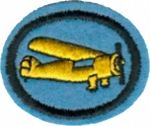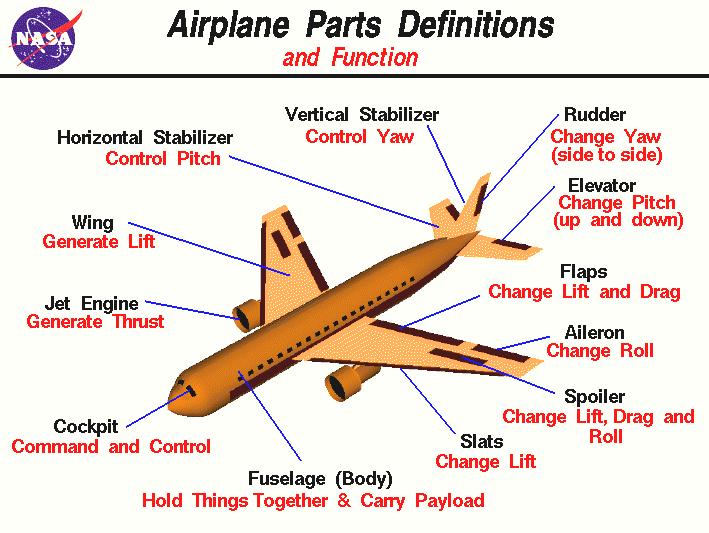AY Honors/Airplane Modeling/Answer Key/es
From Pathfinder Wiki
< AY Honors | Airplane ModelingAY Honors/Airplane Modeling/Answer Key/es /
| Aeromodelismo | ||
|---|---|---|
| Asociación General
|
Destreza: 1 Año de introducción: 1944 |
|
Requisitos
1. Construir y volar con éxito un avión de un kit de madera de balsa y papel, que sea propulsado por una banda de goma o por gas.
SIG Manufacturing is a major supplier.
3. Make and successfully fly two different styles of paper airplanes using sheets of paper between eight (20.3 cm) and fourteen (35.6 cm) inches in width and length.
4. Define, locate, and explain the usage of the following basic items:
- Rudder
- This is the term used to describe the part of the tail that moves back and forth. This movement causes the tail of a plane to move which then turns the plane.
- Horizontal stabilizer
- The horizontal "mini wing" at the tail section of the airplane. The elevator is attached to the horizontal stabilizer with hinges.
- Strut
- A diagonal brace going from the fuselage to the bottom of the wing consisting of a bar or rod used to support the wing on the airplane.
- Cockpit
- Compartment where the pilot sits while flying the aircraft.
- Engine
- The source of power to turn the propeller or turbines and generate thrust. Can be an internal combustion engine, jet engine, or in the case of an airplane model a rubber band engine.
- Landing gear
- An undercarriage that supports the weight of the plane when it is on the ground.
- Propeller
- The mechanical device attached to the engine that rotates to push against air and create thrust.
- Dihedral
- Dihedral is where the right and left wing tips are higher than the fuselage. More dihedral generally means that a plane will be more stable in the air, but will be more difficult to turn. Most planes require a bit of dihedral to fly well.
- Elevator
- Elevator is the term used to describe a plane's horizontal control surface on the tail. This surface enables a plane to pitch upwards or downwards. When an elevator surface moves upwards, the tail moves downwards (the nose of the plane then points up) and vice-versa. Without an elevator, it is hard to control the altitude of a plane as you can't control the rise and fall of the nose of the plane.
- Thrust
- The mechanical force generated by the engine to move the airplane through the air.
- Vertical stabilizer
- The vertical fin which is part of the tail assembly of the airplane. The rudder is attached to the vertical stabilizer with a hinge.
- V-Tail
- V-Tail aircraft are planes that have only 2 stabilization surfaces (in the shape of a V) instead of a conventional horizontal and vertical stabilizers. In a V-Tail aircraft, the 2 control surfaces of the V-Tail work together to give elevator and rudder responses.
Categories:
- Categoría: Tiene imagen de insignia
- Adventist Youth Honors Answer Book/Honors/es
- Adventist Youth Honors Answer Book/es
- Adventist Youth Honors Answer Book/Skill Level 1/es
- Categoría: Libro de respuestas de especialidades JA/Especialidades introducidas en 1944
- Adventist Youth Honors Answer Book/General Conference/es
- Adventist Youth Honors Answer Book/Unknown/es
- Adventist Youth Honors Answer Book/Unknown/Primary/es
- Adventist Youth Honors Answer Book/Stage 100/es
- Adventist Youth Honors Answer Book
- Adventist Youth Honors Answer Book/Completed Honors
- Adventist Youth Honors Answer Book/Arts and Crafts


